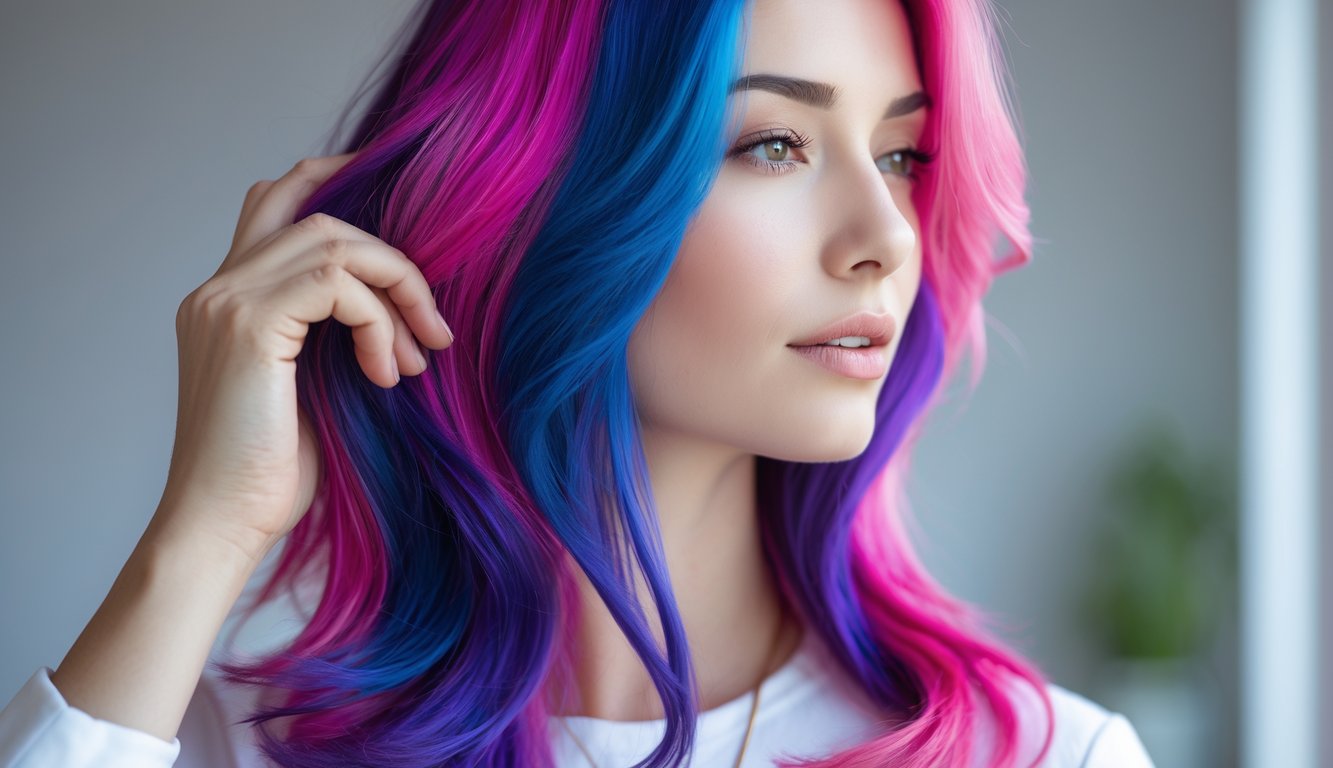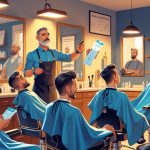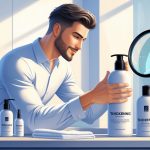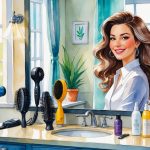
Ten minutes deep into color-blocked hair TikToks and I’m already side-eyeing my own faded teal streak. Seriously, is there anything more “look at me” than a slab of neon orange jammed under platinum? But, of course, nobody tells you those crisp geometric chunks mean you’re basically leasing your hair to the salon every month. Honestly, keeping those sharp lines looking intentional is a money pit—way more than the low-key balayage I used to get away with. DIY? Forget it. I tried once, and the “edge” bled into a sad, muddy green. Spent more fixing it than the original appointment. Never again.
And can we talk about how literally no one admits that every single color-blocking trend—especially bi-color and multicolor blocks—demands constant toning, color-safe shampoo, and this weird paranoia about the sun? I tried skipping a week, just to see. Immediate regret: patchy, brassy, and some mutant blue-green thing I still can’t name. My stylist—who loves quoting surveys—claims 60% of clients with blocks come back every four weeks. That’s a lot of “inspo” reels not showing you the faded mess or the credit card bill.
But wait, the products. Color-protecting serums, hydrating masks, purple shampoo, root sprays—supposedly “must-haves” for color-blocking (literally every guide, like this one, says so). Who’s adding up the monthly total? I’ve had clients confess they spend more on aftercare than the actual dye. Maybe someday, someone invents a vivid color that doesn’t need babysitting. Until then? My bank account is just another casualty of my dopamine hair choices.
What Is Color-Blocking Hair?
So, I’m holding my coffee, and someone asks what color-blocking hair even is. Good question. Is it those wild streaks, or like, the “block color by Wella” posts that keep haunting my feed? Everyone seems to have a different definition. It’s got history, sure, and a pile of fashion baggage nobody mentions (especially not the stylists charging $200 a session). Even my “I don’t care about hair” friends want in now.
Defining Color Blocking in Hair
Blunt version: color blocking means you pick out literal sections—big, obvious chunks—and blast them with contrasting or clashing shades. Not that blended ombré stuff. These are actual blocks. Becky B (she’s a stylist quoted on Intelligent Living) says it’s “two or more vivid hair colours in defined sections.” Not for shy people. Like, platinum slabs next to jet black, or a streak so neon it looks glitched.
I remember staring at the shade chart—“statement” and “subtle” were both options, but let’s be honest, color blocking isn’t subtle. Works on any length, but if your hair’s straight, those lines get extra sharp. Curls? They blend a bit, but not really. Stylists love round brushes and flat irons for this, probably because sharp lines are the whole point.
Home dye kit? Try it if you want to cry over midnight overlaps. Been there, not worth it.
Origins and Influences in Fashion
Ever seen a Mondrian painting? Or those 1960s mod dresses? That’s basically where color blocking in beauty started creeping in. Saint Laurent, Mary Quant—huge blocks of color, and suddenly it’s chic. Now it’s runways, Instagram, and even TikTok stylists remixing it every week. My friend can’t stop pointing out how “statement” this all is, like it’s a personality test.
Now, color-blocking hair just oozes out of fashion campaigns into your local salon. It’s everywhere: grid sweaters, custom Nikes, and now—your scalp. The domino effect is wild. Fashion’s obsession with geometric minimalism didn’t die, it just moved to hair and got expensive.
Block color is everywhere, and Hair.com calls it the “fantasy color trend” for people who want something wild but aren’t ready to go full unicorn. Even the way people talk about it—color block, block coloring, whatever—sounds more like fashion week than a haircut. And now my grandma knows the terms. Weird.
Popular Variations of the Look
Side panels, color-blocked bangs, high-contrast roots, peekaboo nape blocks—how many versions are there now? Even buzzcuts get neon rectangles. “Gemini hair” (thanks, TikTok) is just split dye: two solid colors, right down the part, no blending.
Wella’s “block color” launches are everywhere, daring you to try lime green next to navy. Half-and-half? Blonde in the front, red in the back, zero fade—like your head’s a reversible jacket. Wavy color-blocked hair is a thing too—curling one-inch sections and leaving the ends out, apparently.
Some people stick with natural shades—ashy brown and caramel—but others go full anime. Beauty influencers love pushing the boundaries, but I keep seeing the aftermath: faded blocks that look swampy, roots that make the lines too obvious. Keeping it sharp? Prepare for constant salon trips.
Why Color-Blocking Hair Trends Are Gaining Popularity
Something that bugs me: everyone’s smashing together wild shades—icy silver, neon peach, black hacked into yellow—like it’s just another Tuesday. But it’s not random, apparently. There’s this hype, stylists are obsessed, and you can’t walk past a salon without seeing those chunky highlights glaring back at you.
Expressing Individuality Through Contrasting Colors
Saw a teenager at the mall rocking lime green zigzags through brown hair, not even pretending to blend. Suddenly, “statement hair” is everywhere. Stylists in three shops told me clients want more contrast, more drama—primary red with denim blue, apricot next to raven, sometimes all three. Magazines say Wella’s color-blocking requests jumped 24% from 2023 to 2024. Feels fake, but the article’s still up.
People want to stand out, I guess. LinkedIn headshots that don’t disappear in a sea of beige. But then I heard a guy call it the “paint chip effect,” like everyone’s just collecting swatches. Sometimes I look at my own cobalt streak and wonder if I even chose it, or if I lost a bet with myself.
Influence of Social Media and Pop Culture
Open Instagram—bam, three color-blocked hair reels in a row, all using stuff I can’t pronounce, let alone buy. If you’re not online, you basically don’t exist. TikTok creators with zero training whip out color blends—one video, six million views. Silver, lavender, acid green, whatever. Most of the viral stuff comes from Berlin, Seoul, LA. “Save” is the new like.
Even my stylist stalks #colorblocking for ideas because clients walk in waving screenshots of Kim or Billie and expect it now. I tried tracing the trend on Pinterest, got lost in geometric sections, gave up. There’s no real standard, so it mutates nonstop—someone posts a happy accident, and suddenly it’s everywhere.
Celebrity and Hairstylist Endorsements
Cherilyn Farris (the LA stylist, not the YouTube one) told Mane Addicts that bi-color and multicolor blocks are the “it” move because “everyone wants to stop traffic.” Celebs drop a crimson chunk, get photographed at Cannes, and salons are flooded with requests two days later—never mind that most of those shades don’t even lift right the first time.
Stylists, not celebs, are running the show. Wella’s blog says custom block coloring is way up, and now new stylists learn sectioning before balayage. There’s a New York colorist booked out for months, only doing chunky highlights—like it’s 1999, but with better toner. The kicker? Clients want those bold borders and crisp lines, just to prove they’re on top of the trend.



